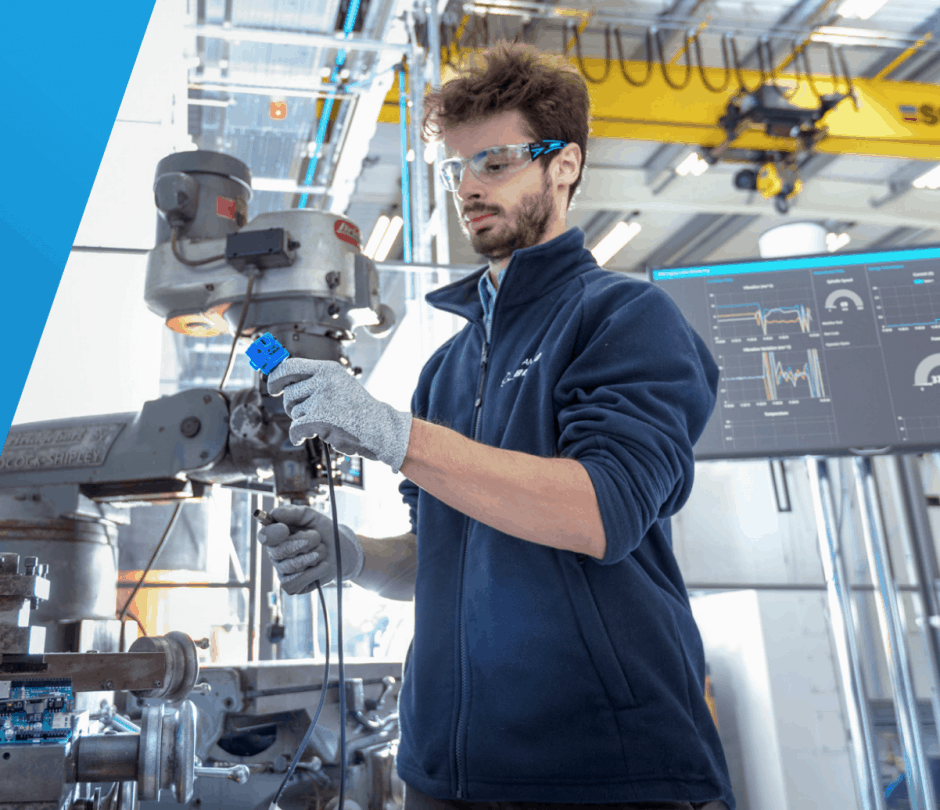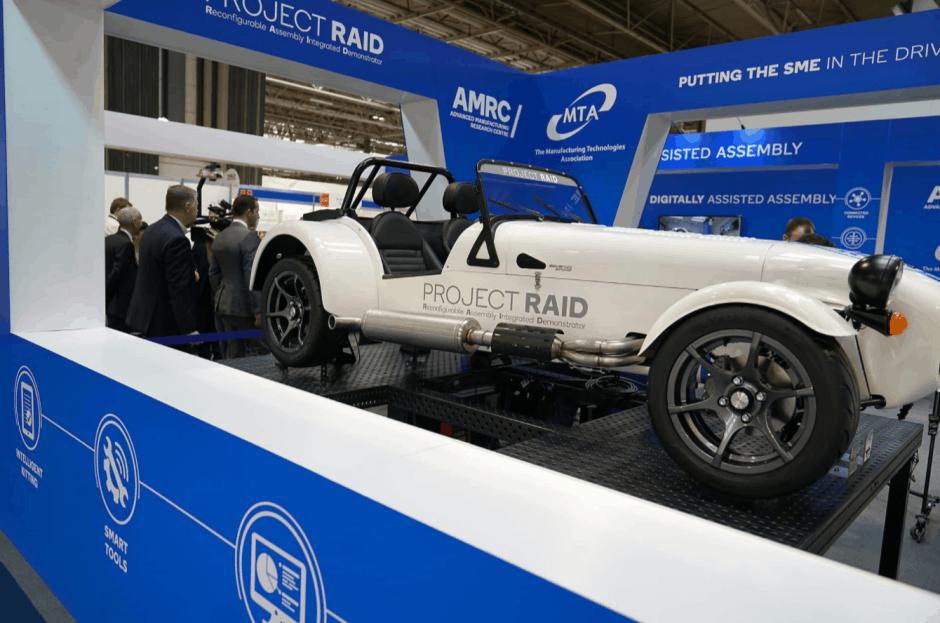Advanced Manufacturing Research Centre (AMRC) is demonstrating how relatively low-cost digital technologies can be used to advance the performance of legacy equipment - in this case a Bridgport Milling machine and a 1956 Colchester Bantam lathe.

AMRC is on a mission to show how digital technologies can unlock game-changing value streams, by breaking down the barriers to adoption and demonstrating low-cost and low-risk solutions for even the smallest of businesses.
This year for MACH 2018 the AMRC has partnered with the Manufacturing Technologies Association (MTA) to provide a unique showcase, demonstrating cost effective solutions for the integration of Industry 4.0 technologies into SME manufacturers.
The AMRC stands have been hosted by members of the AMRC’s Integrated Manufacturing Group (IMG), based at Factory 2050 and the Machining Group, based at the Factory of the Future and so far have seen heavy footfall and a great deal of interest in what the AMRC has to offer.
AMRC Software Engineer Matei Moldoveanu, has been hosting one of IMG’s star attractions, a project to retrofit a legacy milling machine and lathe with a number of low-cost technologies for data acquisition including sensors, accelerometers and thermocouples to measure conditions such as vibration, temperature, current and power consumption. This Industry 4.0 tech allows data acquisition to enable accurate monitoring of the condition of the machine and give production managers valuable information about energy consumption and performance.
“The diversity of companies interested in our legacy project has been incredible, from the smallest of SMEs interested in how we could help implement similar systems to improve their operations, to major global companies wanting to achieve the same outcomes by upgrading still valuable legacy manufacturing processes,” he said.
“We have even had interest from PhD students and international research organisations looking at investing in similar themes of technology development and global companies with their own supply chains wanting to provide valuable services to provide Industry 4.0 connectivity to their partners.
People didn’t realise how easily - and cheaply - they could digitally enable these workhorses of the installed SME base
“The interest in the demonstrator shows what determination companies have to preserve and upgrade legacy manufacturing processes that still provide value, by taking advantage of the potential benefits of Industry 4.0 technologies through low-cost investments.”
Professor Rab Scott, Head of Digital at the AMRC said: “The reaction to the stand has surpassed our expectations. We expected a great response to the demonstrations of the latest technologies like VR and AR – areas in which we are arguably amongst the leading integrators, but what has really cheered us up is the way in which attendees have reacted to our legacy equipment demonstrations.
“People have been excited to see the 1956 Colchester Bantam lathe, some saying they trained on one of these, or they have one of these in their company and didn’t realise how easily - and cheaply - they could digitally enable these workhorses of the installed SME base.”
MTA CEO James Selka said: “It is vital that we help SMEs to find cost effective ways to get their businesses digitally enabled if UK manufacturing is to fully embrace the fourth industrial revolution. That’s why we are delighted to have been able to partner with the AMRC on this project. With the technology that is available - and affordable - every business should be thinking about getting digital.”

Another attraction gaining a lot of attention from visitors is IMG’s Reconfigurable Assembly Integrated Demonstrator, or Project RAID. The project shows how advanced technologies can be tailored to any complex full assembly process and used to fuel improvements in manufacturing productivity.
The team are assembling half of a Caterham sports car by hand as per the written instructions. They are then building the other half using variety of technologies covering all the themes of research currently underway in Factory 2050; including robotics, automation and control, integrated metrology, digitally assisted assembly, manufacturing informatics and visualisation of data to collect information about the various construction processes along the way.
The technologies being implemented are designed to be easy to integrate and demonstrate their ability to drive even the most advanced of Industry 4.0 manufacturing techniques and processes.
The whole project is being powered by a manufacturing operations system called DELMIA Apriso, from Dassault Systemes.
AMRC Project Manager, Alex Godbehere said: “DELMIA Apriso is the system we have used to develop our Manufacturing Execution System (MES) for Project RAID; this is the system that controls all of the manufacturing processes for the assembly of the Caterham. “The MES is an intelligent system that shares information, so if the specification for a component or work instruction changes, the system is able to intuitively update and keep the assembly process running effectively.
“We have used the system with Project RAID specifically to show how we can develop a system that can create complex work instructions from CAD information and be intuitive enough to validate a system that can be adapted for a variety of industrial requirements.”
The AMRC is at the MACH Exhibition all week, you can find the team at stands H7-430 and H7-540.




Swiss geoengineering start-up targets methane removal
No mention whatsoever about the effect of increased methane levels/iron chloride in the ocean on the pH and chemical properties of the ocean - are we...